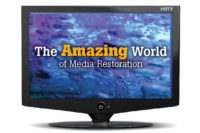Contents: The Future of Restoration




I am often surprised by structural restoration companies that have not yet added contents restoration to their repertoire.
In years gone by, it was de rigueur for adjusters to simply “cash out” hundreds of pounds of soft contents that had become wet or smoke damaged. Often, they simply had the workers toss wet clothing, sheets, blankets, drapes, etc., on a truck and haul it away to a city refuse center.
The claims professionals also routinely “total lossed” wet electronics, furniture and the assorted bric-a-brac that one might find in a modern home. But, more recently, the insurance companies have come to the conclusion that restoring such items can save them massive sums of money over the cost of replacement. So now more and more adjusters are seeking out trained contents restoration divisions and mandating them to save as much of an insured’s valuables as they can – and they are paying for the skills involved in the process.
If your company moves furniture out of a living room in order to clean, restore or replace carpeting, you have already begun the contents cleaning process. If your front line workers are taking paintings off walls, transporting appliances into the front yard and piling books into boxes so the structural workers can get to their work, they are providing contents services.
If you include a final clean-up of a kitchen after a fire or of a bathroom after a sewage back-up, your crew is performing contents cleaning. And with only a few more steps, they could be earning a whole new stream of income for your company.
Money is the reason that many companies enter the contents arena only to find that they actually lose money due to breakage, lost items and the glacially slow process of packout, inventory, cleaning and packback.
Still, there are thousands of companies that are earning a strong income and keeping their accounts well into the black simply by adding a contents division. How are they doing it? What is the difference that makes a difference?
Training.
Their staff moves like an assembly line. Inventory is kept with a simple camera (we call the process “digital photo inventory”). The packout pros recognize fragile valuables and pack them with care. They learn everything from how to cushion and protect an antique artifact, to how to pack a series of law books so there is no damage to the pages or spine.
And they have other “insider knowledge” as well. If you were requested to remove smoke odors from a major corporation without forcing the business staff to leave their desks, or to disinfect a home without removing the family, how would you go about it without the use of ozone?
Trained contents pros know three ways to solve the dilemma.
Or, let’s say an adjuster is about to cash out $35,000 worth of smoke and water-damaged figurines – could you do anything about it? One contents company owner did. He knew a technique that allowed him to clean and restore them all – which helped make the adjuster look good to his supervisor – something the adjuster was not likely to forget!
A couple of months ago a contents company in Louisiana packed out over 600 computers from a single college classroom building – and restored them all, along with an estimated $4 million in electronics (and for them it was just another routine job!).
Restoring electronics used to be virtually unheard of in the restoration industry, but now it has become so common that many adjusters ask companies if they know how to perform that service before they even hire them. Once your staff has the training and equipment, it can be remarkably easy to clean and restore electronics (provided they haven’t waited too long to call you) and it can be so lucrative that some companies have made it a specialty.
Did you know that you can remove mold from the pages of a book with dry-ice or soda blasting?
Did you hear about the art conservators who can restore museum-quality paintings and who can often give you an estimate by seeing a photograph of the damaged piece from your cell phone? When you can save a masterpiece that has been appraised well into the five figures, insurance companies remember you!
And while structural workers might walk right over paint chips from a charred family portrait, contents pros carefully gather them, put them in a small bag and keep them for the art conservationists.
It’s all just a long way of saying that contents restoration professionals are the “Swiss Army knives,” of the restoration industry. And those teams, that are well trained, earn a handsome profit for their companies – a profit that adjusters are happy to pay because of the monumental totals that are being saved for them.
Companies with contents divisions get more jobs because they can say “yes” when most other companies have to say “no” to requests by owners and claims representatives.
Contents restoration is the future of our industry. With training and experience, a contents division can be the answer to how one can “recession-proof” a company and give insurance companies a clear reason to hire you over your competitors.
Looking for a reprint of this article?
From high-res PDFs to custom plaques, order your copy today!








